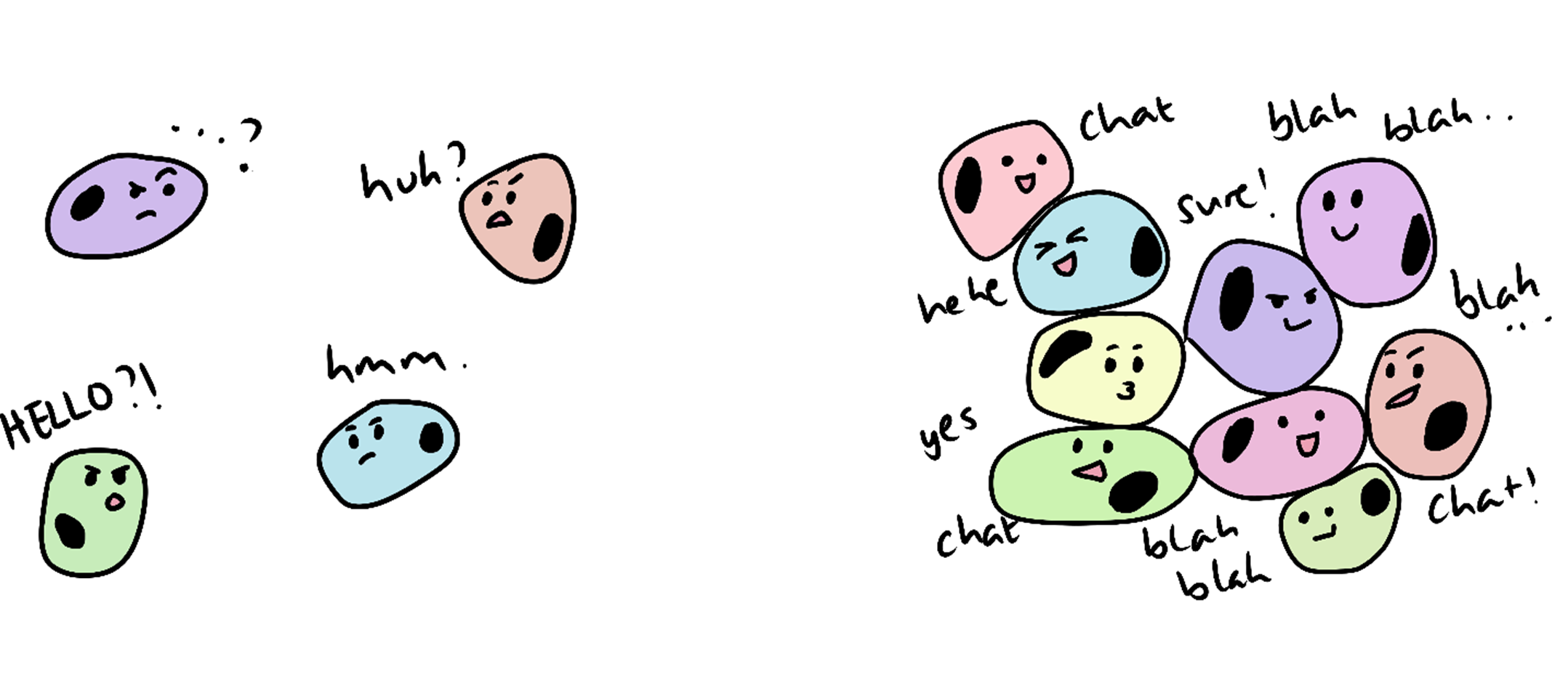by Adwoa Sarfo-Bonsu, MSc student, Department of Metabolism, Digestion & Reproduction
The more, the merrier: Cells have social lives too
There are certain processes that occur inside us that can only happen effectively when our cells are in close contact with each other. Our cells are ALWAYS communicating. Sometimes they check in on each other to make sure everyone is alright (tissue homeostasis), other times they might even team up together to fight an infection (immune response), and sometimes cells come together to make a whole new embryo (fertilisation).

To achieve all these things and many more, cells need to be able to constantly send and receive messages and instructions to each other. This communication is crucial to the healthy maintenance of our cells and our bodies. If cell communication goes wrong, this can lead to many diseases including dysregulated cell growth (cancer).
Growing human embryonic stem cells (hESCs) in the lab has helped us understand many mechanisms in the processes that happen inside us. Using hESCs we can model some of the events that happen during human embryonic development.
During development, BMP4 is a growth factor that has a role in generating the cells (mesendoderm cells) that will become our future lungs, liver and heart, amongst other organs [1]. We can model and monitor this period in the lab by treating hESCs with BMP4. When treated with BMP4, hESCs which are grown in cell clusters develop mesendoderm cells. However, when grown as single cells, hESCs do not develop mesendoderm cells.
My project was to find out more about why these differences occur and how cell-to-cell contact plays a role in the early stage of embryonic development.
From the difference between the responses to BMP4 in cell clusters and single cells, we know that how cells contact each other affects how they develop. For hESCs to develop into mesendoderm cells, they need to communicate with each other, and we believe that the further away cells are from each other, the less likely they can hear and respond to instructions.

What we don’t know is if the number of cells plated in a dish together can affect how strongly the cells contact each other, and in turn, how that influences cell communication. Finding this out could help us understand more about how cells interact in our bodies.
My experiment consists of plating both low and high numbers of hESCs into dishes and measuring the amount of connecting proteins they present with their neighbouring cells. The more connecting proteins, the stronger the cells are connected. The less connecting proteins, the weaker the cells are connected.
I think the more cells put in a dish together, the more connecting proteins they will have and the more strongly connected they will be. This in turn allows hESCs to communicate better and respond to instructions (such as BMP4) appropriately.

Overall, my project highlights the link between cell-to-cell contact and cell communication. It might be easy to overlook something like how many cells to put in a dish, but let’s be honest, cells have social lives too.